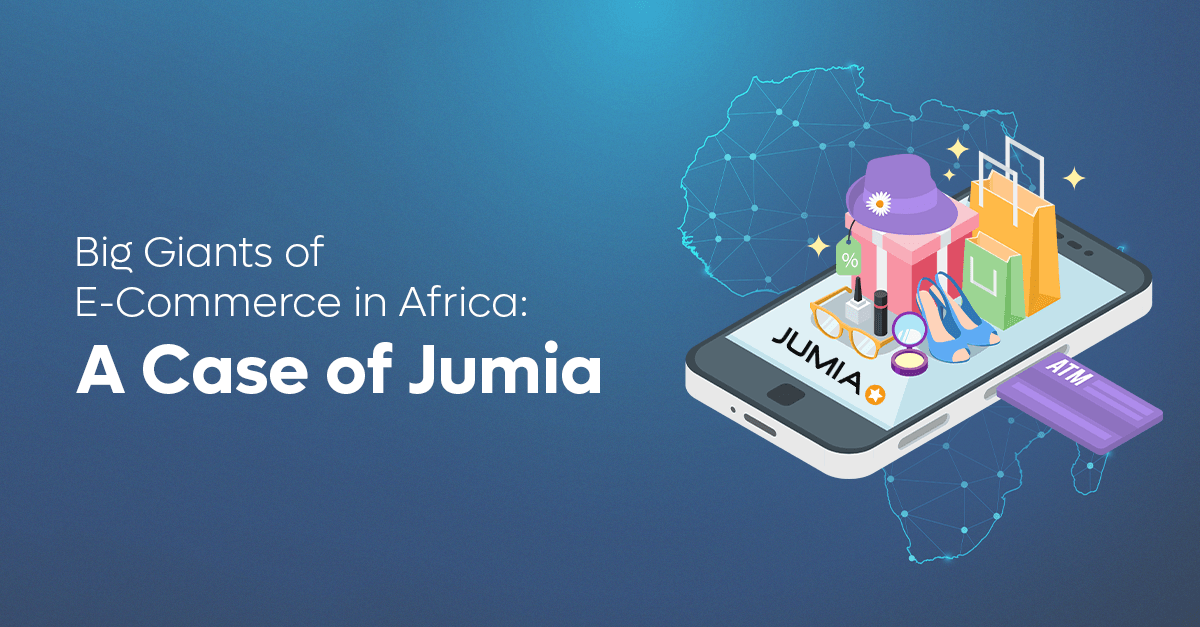This guest article was contributed to TechCabal by Osinachi Ukomadu, CEO of Heroshe.
Seven years ago, Tunde began using Jumia to sell goods. He only had a little capital or experience, but he saw potential in the platform and decided to take a chance.
Tunde began by selling small items like phone cases and chargers. Still, as he gained more customers and positive reviews, he expanded his inventory to include smartphones and other important phone accessories. In addition, he spent countless hours researching trends and negotiating with suppliers to ensure he could always offer competitive prices.
Despite the challenges of running his own business, Tunde persevered. He dealt with demanding customers, shipping delays, and cash flow issues but never gave up.
One of his biggest challenges was when someone tried to sabotage his business by leaving fake reviews. He contacted Jumia’s support team and worked tirelessly to dispute the false claims. Soon enough, the competitor’s reviews were removed.
After a few years of hard work and several improvements from Jumia, Tunde’s business enjoyed success. He could hire employees, grow his inventory, and expand with a physical store.
Jumia pioneered e-commerce in Nigeria and is one of Africa’s largest e-commerce companies. In 2022, they celebrated 10 years of e-commerce in Nigeria, and currently, they are active in nearly a dozen countries in the continent. They are also often called the Amazon of Africa because of their giant strides in the industry. Many people try to disparage them by saying they tried to copy the Amazon model; whether that is true or not is inconsequential. However, it is undisputed that putting something on the ground when they launched was a feat. This was when all the necessary infrastructure was not in place to establish a thriving e-commerce business in Africa. So, give them some credit for building a frontier.
Jumia created its e-commerce business in the face of a lack of infrastructure and the right resources to foster growth. It was challenging, and they’re still facing such challenges today as they spread e-commerce across Africa. It’s been a case of establishing in some locations and quickly closing and moving to other places if it doesn’t work. However, it is crucial to note that just because a structure worked in the US, such as the Amazon model, doesn’t mean it will work in Africa. Every country and continent are beginning to adopt and localise technology and technology-enabled businesses in their climes.
Adopting the Amazon model
Before now, there was Internet 1.0, a copy-and-paste model, where everyone tried to do a version of an American company in their locality. However, people are beginning to realise that such ideas hardly scale because the local needs and challenges differ entirely from the locations they are copying those business ideas from. That’s the challenge that Jumia ran into and is still struggling through. This is because many things that make e-commerce work in Africa differ entirely from what makes e-commerce work in the US. The social nature of commerce in Africa, the payment rails, the logistics infrastructure, and the trust gap are critical missing pieces. They tried to solve all of these using the model that Amazon had mastered. However, they encountered challenges and had to develop ingenious solutions to handle some of the issues. It is challenging to change the culture that has prevailed in society for a long time. You have to ride the wave of that cultural norm while introducing a new way of doing things. E-commerce 2.0 and E-commerce 3.0 will drive this change.
E-commerce 2.0—or B2B e-commerce and the like—is what Alerzo and Marketforce are operating, and it is enormous. E-commerce 3.0, on the other hand, is a peer-to-peer kind of e-commerce currently taking place in social commerce. So much of that will drive what e-commerce will be in Africa, and the big players will either figure out how to adapt to these new models or keep playing the old game to their detriment.
Growth of Jumia
The first-mover advantage of Jumia
The first-mover advantage was indeed a real advantage for Jumia. They gobbled up a lot of customers when they came in initially, which helped them gain ground. They figured out how to bring goods into the country that ordinarily were challenging to get locally or, if available locally, were prohibitively expensive. Previously, someone would have to travel out of the country by obtaining a visa, buying a plane ticket, flying out, finding a supplier, buying the items they need, putting them back on a plane, and bringing them back into the country. In most cases, they would double the item prices compared to the price they paid in order to cover their expenses. In comparison, Jumia brings these things into the country in volume leveraging economies of scale, and you, an ordinary trader, can’t compete with their economy of scale. The economy of scale was a great advantage for them in bringing in items like phones and other consumer electronics to sell at reasonable prices compared to what was sold in the local market.
Access to adequate funding
Being well-funded and having the right people at the helm of leadership was critical to Jumia’s growth. They could build the kind of infrastructure that was not available; the logistics infrastructure, payment capabilities, etc. They also innovated with a pay-on-delivery system, which was a creative solution to payment issues. This helped them get many customers because trust was a huge challenge. The trust deficit is still there, but they lowered that barrier of trust with cash on delivery. This helped them win the hearts of many customers. However, they’re currently pulling away from that payment model because it’s become quite expensive. Some customers place an order only to reject the order upon arrival. This costs time and money in the fulfilment process. However, compared to the local market, they still have more variety, quality products, and better prices than most.
More opportunities for growth
The local market is getting smarter, and they are figuring out how to get the same quality of products at better prices and compete with the likes of Jumia. And so, their inability to be a blowout success is due to the bifurcation of the market. They would either continue with their current mode of operations or create solutions that reach the regular person on the street. This is similar to Copia in Kenya, where they find local players in communities where they supply instead of trying to sell online. They enable the local shops and supermarkets to be an ordering centre for the local community. They then deliver those orders to the local mum-and-pop shops to distribute to the community members who placed the orders through them. This helps them move from tier one and tier two to tier three cities. This is no longer e-commerce for the middle class or the well-off but for the local people where they live. For Jumia to get to the next level of scale, they will have to move from the model of just pure play e-commerce to figuring out how to get to the lower strata of the population.
This is still a form of e-commerce because it is digitally driven. However, as opposed to a direct-to-consumer, it’s almost like a B2B play. Instead of selling to you, the consumer, they are leveraging the community’s supermarkets, pharmacies, and small shops. If customers don’t find what they want to buy, they visit a kiosk where they can place their order. After customers place their orders, the shops aggregate all the orders and then push the orders to the e-commerce companies, which will fulfil them. So that makes it possible for e-commerce businesses to reach the local people. It’s not a pure-play e-commerce; it is more of a B2B kind of play, but it still drives products into the hands of the consumer at the end of the day.
How Jumia can improve their brand, going forward
Jumia has done a great job of switching over to a marketplace system which has helped a great deal to bring in other players onto the platform. Even though they tried to become so many things rather quickly early on by incorporating flight booking, travel, leisure, and all these other things, they are slowly diverting to focus on their core, which is e-commerce. And as I mentioned, they can look for ways to move away from the pure-play e-commerce as it exists with the likes of Amazon today and create solutions that leverage third-party players. These solutions can include the agency model that would enable them to get to the hinterlands to make e-commerce for those who live in the cities and those who live in those areas. This is going to be the most critical move that they can play to be able to get to the local person on the street.
In addition, they would need to factor in the product category for these individuals in their local communities, far away from the cities, because, for instance, many are interested in things other than consumer electronics. For some, it might be just consumables they can buy from a local store. So, Jumia must find a way to review its product categories to include the kind of products that these people would be interested in purchasing. The margin may be different, but the volume will be there to support it, and if they have an excellent distribution model, they can make it work. And so, that’s an outsider looking into how they can take advantage of the change in e-commerce flow in Africa.
What Upcoming Businesses Can Learn From Jumia
The primary lesson is to win a market, own a market—and own a market in a specific category. A lot is going on right now in what is called vertical commerce, where it’s not about having every product but staying within a niche where you focus on a particular geography and win that market. By doing so, you can now be able to diversify into other categories and other markets. Initially, it might look like you’re playing small, but what that does is it enables you to go deep into a particular space. For instance, I’m seeing some people do this by focusing on providing raw materials for the construction industry. And they become where you go if you’re looking to construct a building, no matter the size. So what that means is that, as the housing market is growing, so is your business. They are also creating technology on top of that for builders or contractors that construct buildings. It provides a portal where these individuals can come in and plan out the entire building process. Here, they can do all of the quantity surveying—where they get all the materials and outline everything—to even where they schedule when those materials will be delivered. This means that you can run your entire project on their software, and they provide you with all the materials you require to complete your building. This type focuses on an industry, goes way deep, and gets economy of scale. If you operate here, you win customers; you give them a product that allows them to use your service repeatedly. For instance, for customers who regularly build, once you win them for a certain estate that they are building, they will probably use you for the next estate and the next estate because you’re providing everything that they need. Likewise, with the economy of scale, you drop prices low and win their business going into the future. That will be an excellent way for new players to come in, own a market, and drive that market through, end-to-end.
What do you think about our stories? Tell us how you feel by taking this quick 3-minute survey.





















